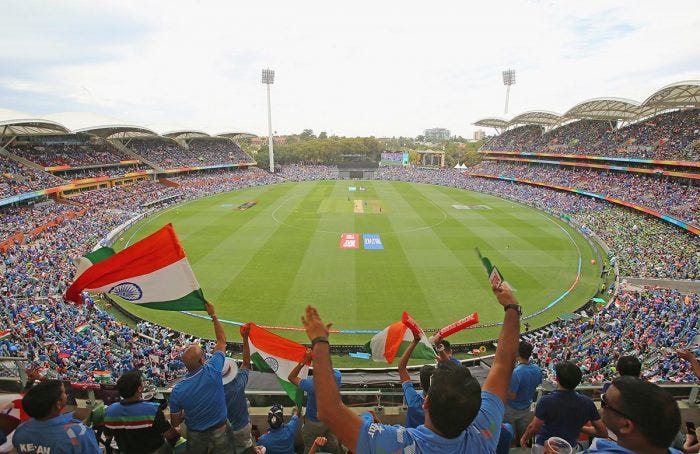Introduction
Cricket is more than just a sport in India—it is an emotion, a way of life, and a unifying force that brings together people from all walks of life. With a history spanning over a century, cricket has evolved from being a colonial pastime to the most celebrated and followed sport in the country. The craze for cricket in India is unparalleled, with millions tuning in to watch matches, celebrate victories, and idolize cricketing legends. This article explores the reasons behind India’s cricket obsession, the impact of the sport on the nation’s culture, and how it has shaped India’s global sporting identity.
The History of Cricket in India
Cricket was introduced to India during British colonial rule in the 18th century. The first recorded match was played in 1721, and by the late 19th century, the sport had gained popularity among the local population. The establishment of the Board of Control for Cricket in India (BCCI) in 1928 marked the formalization of cricket in the country.
India gained Test status in 1932 and played its first match against England at Lord’s. Though the early years were challenging, India gradually emerged as a competitive force, winning its first Test series in 1952. The 1983 ICC Cricket World Cup victory under Kapil Dev changed the course of Indian cricket, sparking a nationwide revolution that made cricket a household passion.
Reasons Behind the Cricket Craze in India
- Historical Influence and Colonial Legacy
- Cricket was introduced by the British, and Indians adopted it with enthusiasm.
- The early years of cricket saw the emergence of iconic players who inspired generations.
- Success on the International Stage
- The 1983 World Cup victory created a wave of cricketing passion across the country.
- Winning the 2007 T20 World Cup and the 2011 ODI World Cup further strengthened the craze.
- Cricketing Legends and Role Models
- Players like Sachin Tendulkar, MS Dhoni, and Virat Kohli have inspired millions.
- These legends are not just athletes but national heroes.
- The Rise of the Indian Premier League (IPL)
- Launched in 2008, the IPL revolutionized Indian cricket.
- The league provides entertainment, a platform for young talent, and immense economic benefits.
- Media and Commercialization
- Live telecasts, advertisements, and sponsorships have made cricket a lucrative industry.
- The accessibility of matches through television and digital platforms fuels fan engagement.
- Social and Cultural Impact
- Cricket is deeply ingrained in Indian culture, with fans treating it as a festival.
- Street cricket is played across cities and villages, symbolizing its grassroots popularity.
The Impact of Cricket on Indian Society
- Economic Growth and Employment
- Cricket generates billions in revenue through broadcasting rights, sponsorships, and ticket sales.
- The sport provides employment opportunities in coaching, commentary, journalism, and sports management.
- Uniting a Diverse Nation
- Cricket transcends regional, linguistic, and religious differences, uniting fans across India.
- Historic moments, like India’s 2011 World Cup victory, bring the entire nation together in celebration.
- Emergence of Women’s Cricket
- The success of players like Mithali Raj and Harmanpreet Kaur has boosted women’s cricket.
- The Women’s Premier League (WPL) is set to further popularize the sport among female athletes.
- Technological Advancements and Cricket
- Innovations such as Hawk-Eye, Decision Review System (DRS), and advanced analytics have enhanced the game.
- Fantasy cricket platforms and esports leagues contribute to fan engagement.
Challenges Facing Indian Cricket
- Match Fixing and Corruption
- Scandals in cricket have occasionally tarnished the sport’s reputation.
- Strict regulations by the BCCI and ICC aim to combat corruption.
- Over-Reliance on Cricket
- The dominance of cricket often overshadows other sports in India.
- Government initiatives like Khelo India aim to promote diverse sporting disciplines.
- Player Workload Management
- The busy cricketing calendar puts immense pressure on players.
- Proper workload management is crucial to prevent injuries and burnout.
The Future of Cricket in India
India continues to be a cricketing powerhouse with a promising future. The emergence of young talents, technological advancements, and the increasing global appeal of the sport ensure that cricket’s craze in India will remain strong. With India bidding for future World Cups and expanding leagues like the IPL and WPL, the love for cricket will only grow.
Conclusion
Cricket is more than just a sport in India—it is a passion, a unifying force, and an integral part of the nation’s identity. The undying craze for cricket stems from historical influence, iconic players, and India’s success on the global stage. As the game continues to evolve, its cultural and economic significance in India will only strengthen, ensuring that cricket remains the heartbeat of the nation.


